Growing lemongrass in the garden and the secrets of caring for it
Among the ornamental plants, there are many that will appeal to avid pragmatists. Planting lemongrass on the site will be an excellent solution for those who, along with the aesthetic pleasure of decorating a country landscape, are important to get a useful action that will pay off the effort, money and time spent on caring for the vine. Until late autumn, the plant does not lose its attractiveness. In spring, lemongrass enchants with white fragrant flowers, in summer ной lush emerald greens, from which peep out brushes covered with ripening berries. In autumn, it changes color, becoming lemon yellow, emphasizing the vibrant beauty of its scarlet fruit. Vines grow rapidly, covering the supports with a carpet of leaves, and can hide behind any imperfections in the garden: old buildings, fences, sheds, chipped walls. The arches and gazebos entwined with them look great.
Choosing a landing site
Chinese lemongrass is native to the subtropics. The main place of its growth in the wild is the Far East region, in particular the Amur Region, Khabarovsk and Primorsky Territories, less often it is found on Sakhalin and the Kuril Islands. The lemongrass owes its cultivation to gardeners, who fell in love with it for its catchy beauty, and the simple care and unpretentiousness of the vine added its advantages in the eyes of the owners of summer cottages. It is grown in the Baltics, Ukraine, Belarus, in the middle zone and in the south of Russia, in Western Siberia.
In the garden, the success of vine breeding is directly related to the competent choice of a site for planting it. If it is done correctly, the plant will not only reward it with high decorativeness, but will also bring a good harvest of useful berries. It is better not to plant lemongrass in the shade; it prefers sunny and warm places. Drafts and dry hot winds are equally detrimental to the vines, so the site must be protected from them. The plant develops best of all near the southern walls of buildings. It can be planted from the west or east side. In this case, the lemongrass will have enough light that will fall on it for half for.
Cultivation of a crop requires thorough soil preparation. Abundant fruiting from lianas can be expected only in loose, highly nutritious soil with a high content of humus and with a neutral or as close to it reaction as possible. Good drainage is very important for them. The plant is demanding on the structure and quality of the soil.
Prepare a suitable substrate for it according to the following rules:
- If the soil on the site is characterized by high acidity for magnolia vine, it is neutralized by adding lime.
- Clay is added to peaty and sandy soil and the mixture is enriched with organic fertilizers.
- If the soil in the garden is a heavy loam that does not allow water and air to pass through to the roots of vines, it is prepared for their cultivation by adding sand and humus.
Advice
Lemongrass does not like excessive moisture, so it is better to plant it in areas where groundwater is low. If they are close to the soil surface, it is recommended for the plant to fill up high ramparts or choose natural hills.
Disembarkation rules
The time for planting lemongrass on the site depends on the characteristics of the local climate. In the middle lane, the procedure is carried out in the spring, from late April to early May. In the southern regions, it is better to plant in the fall, in October. There is one nuance worth considering. Growing lemongrass will be more successful if it is immediately placed in a permanent place without replanting. Therefore, the timing of the procedure is determined by the time of purchase of planting material. If the vines bought in the fall are buried for the winter, they may not take root during a spring transplant.
Bushes growing separately from each other develop poorly, therefore, it is better to place lemongrass in a row of 3 copies, leaving an interval of 1 m between them.They are planted in a trench, the width of which is 0.5 m, and the depth does not exceed 0.6 m. to facilitate the further care of the vines, in the middle, at a distance of about 1.5 m, metal stakes are installed on which the trellis will be attached. The bottom of the trench is covered with a 30 cm drainage layer of crushed stone, gravel, broken brick or slag, slightly compacting it. A nutritious substrate is poured on top, in which the soil is thoroughly mixed with the following components:
- rotted manure;
- phosphorus;
- nitrogen;
- lime;
- sand.
There is another option for preparing the soil for lemongrass: take leaf compost, sod soil and humus in equal proportions, add superphosphate (0.2 kg) and wood ash (0.5 kg). The fertile mixture is crushed into the trench. In those places where the vines will be planted, a cone-shaped tubercle is formed from it, which is slightly compacted. If the cultivation of lemongrass is planned at the wall of the house, a trench is made at a distance of 1-1.5 m from it. This will protect the roots of the vine from waterlogging: drops from the roof will not fall on them.
For breeding lemongrass on the site, it is better to choose seedlings that have reached 2-3 years. By this age, their height is usually only 10-15 cm, but their root systems are already well developed. Before planting, the underground part of the plant is dipped into a bucket with a clay mash mixed with a mullein (1 liter of fertilizer per 1 bucket of water). The seedling is placed on a tubercle and, carefully spreading the roots along it in all directions, sprinkle with soil. It is important to ensure that the root collar of the plant is not deeply buried, but remains at the level of the soil surface. The land around the vines is slightly compacted, well watered and mulched using peat or humus. A layer of organic substrate near its trunk will help retain moisture in the soil and feed the seedling. Young plants take root easily.
After landing
At first, after being placed in the ground, caring for lemongrass involves
- protection from the bright sun (he needs shading within 2-3 weeks);
- loosening the soil to a shallow depth;
- weeding;
- spraying vines with warm water in dry weather.
In the homeland of the culture, the climate is warm, but humid, so in the sultry summer, its cultivation will require constant attention. Young lemongrass are especially in need of regular spraying, which can die without sufficient water. Watering adult plants is necessary in 2 cases: when the days are dry and after each feeding. Warm water is used for the procedure, 5-6 buckets are consumed per bush. To keep moisture in the soil longer, the hole is covered with dry earth from above.
The first 2 years after planting Schizandra are characterized by intensive growth of the root system. In lianas, it is fibrous and located close to the surface of the soil ˗ at a distance of 8-10 cm. Therefore, care in the form of loosening is important to carry out carefully and shallowly, sinking into the soil only 2-3 cm. Schisandra responds well to fertilizers. Both organic and mineral compositions are suitable for him. During the period of active development of the root system, it is better to apply them dry, scattering them over the surface of the soil like mulch.
When the seedlings reach the age of 3 years, the feeding scheme changes. Three times a season they are fed with complex mineral preparations. The first feeding is carried out in early spring, while the buds of the vines are still sleeping, bringing in nitrogen, potassium and phosphorus in equal proportions. You can use nitrophoska for it (at the rate of 4-50 g per 1 m²). The time for the second comes after the end of flowering, when the formed ovaries are actively growing. During this period, the plant needs more nitrogen, but it also needs potassium with phosphorus. Experienced gardeners recommend watering lemongrass with diluted and fermented mullein (1 bucket per 1 bush). It is allowed to replace it with bird droppings.
After harvesting, the vine is fertilized for the last time. Potassium and phosphorus are used for the third feeding. Mineral preparations are embedded in the mulch using a rake, not forgetting to water the plants abundantly after the procedure. Growing a crop will not bring any trouble if you add compost to the soil every 2-3 years, deepening the nutrient composition by 6-8 cm.
Supports and trim
Competent care of lemongrass involves tying it to the supports. It is advisable to grow vines on a trellis, then they will be better lit, and their brushes and berries will turn out to be larger. If lemongrass is not tied up, its decorative effect will decrease, it will look like a short bush and most likely will not please with the harvest. It is better to install the trellis immediately when planting vines, in extreme cases, next spring. During her absence, wooden stakes can be used as support for young shoots.
The posts for the trellis should be chosen long, their height after digging in should be 2-2.5 m. They are deepened into the soil by 0.6 m, and then 3 rows of wire are pulled. The lower one is located at a height of 0.5 m from the surface. Young seedlings are tied to it in the first year of their development in the garden. 0.7-1 m are left between the remaining rows. They will be needed when the shoots grow up. Lemongrass needs care in the form of periodic tying all summer. Vine branches are placed on the trellis fan-shaped, directing them up. They are not removed for the winter.
Advice
If lemongrass was planted near the house, ladders installed at an angle will provide support for it.
Plant pruning is carried out for preventive purposes and to increase decorativeness. They begin to perform it when the seedling germinates in one place for 2-3 years. In the life of a vine at this time, the stage of intensive development of roots is replaced by a phase of active growth of green mass. Many shoots appear on it, of which 3-6 should be left, cutting off the rest as close to the soil as possible. If lemongrass is adult, its old 15-18-year-old branches bearing few fruits are also removed, replacing with the strongest young shoots.
The optimal time for pruning is autumn, when the vine has already dropped its leaves. If necessary, you can spend it in the first half of the summer. In winter and at the end of spring, it is dangerous to do this: after removing the shoots, the plant will exude abundant juice and may dry out. With the arrival of heat, it is only allowed to get rid of the root growth. Do this every year by pruning it under the soil. If the procedure pursues sanitary purposes, then dry, damaged, small shoots that thicken the crown are removed from lemongrass. The side branches of the vine should not be too long. When pruning, 10-12 buds are left on them.
Schisandra is a very spectacular plant that will adorn the garden with its elegant decoration from spring to autumn. It will come in handy in winter, its berries will give a boost of vigor and help in the treatment of many diseases. Tea made from leaves, stems or bark of lemongrass has a pleasant color and delicate aroma. In addition to its healing effect, it tones, refreshes and quenches thirst perfectly.
Growing lemongrass on the site has its own characteristics. In order for the vines to bring a rich harvest, you will have to try: choose the right place for them, carefully prepare the soil, put up supports, regularly spray, feed and cut. But the complexity of caring for the plant does not differ; if the listed recommendations are followed, even beginners in gardening will successfully cope with it.
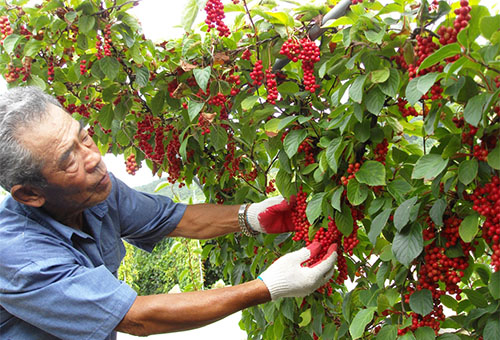

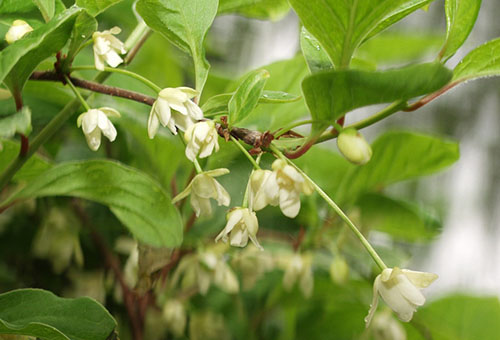
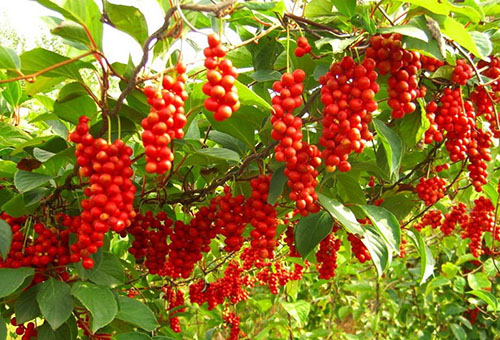
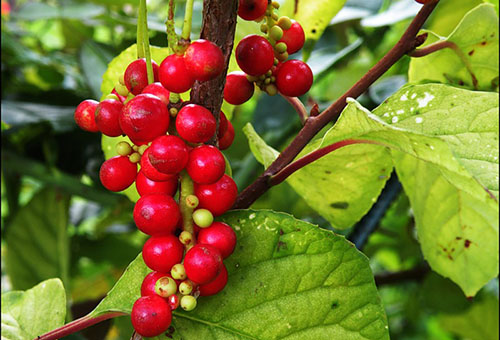
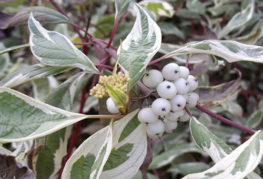
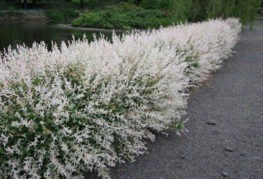

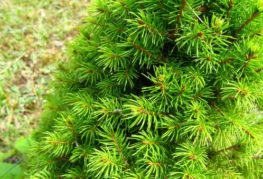

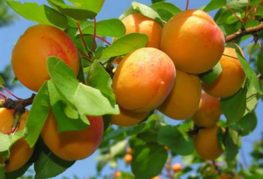
and will be published shortly.